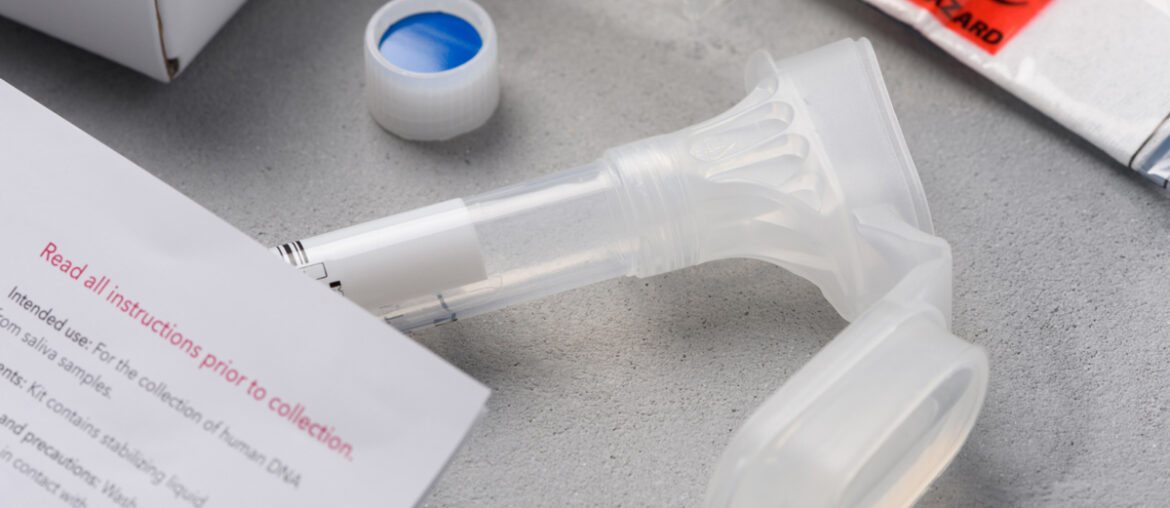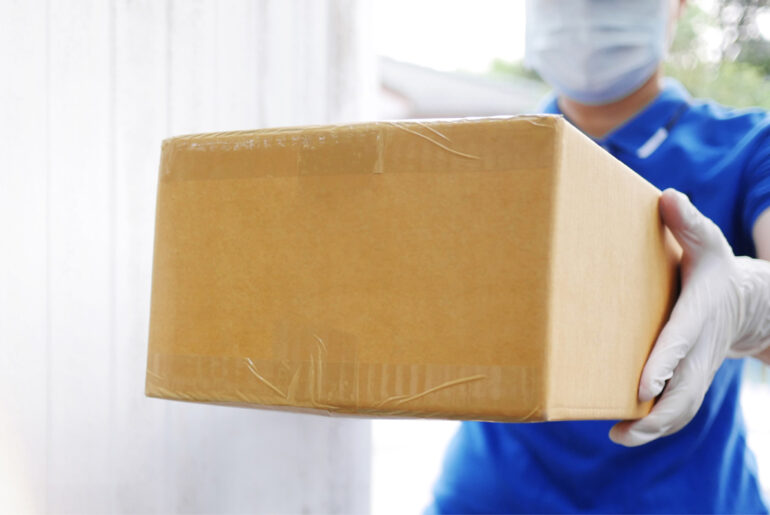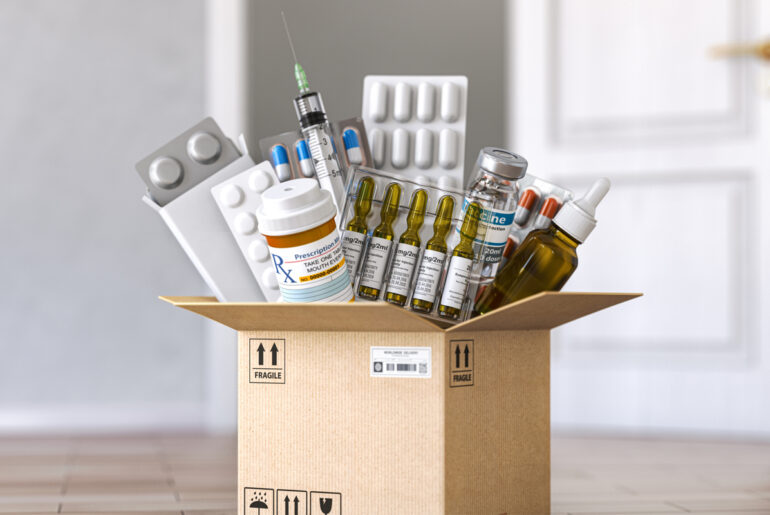Specimen and sample delivery in the medical industry refers to the transportation of biological materials, such as blood, urine, tissues or other bodily fluids, from one location to another for diagnostic testing or research purposes. This process is crucial in the healthcare sector as it allows for the accurate and timely analysis of specimens, aiding in the diagnosis and treatment of patients.
For a specimen delivery business, understanding and providing this service is of utmost importance. Medical laboratories, hospitals, research facilities, and other healthcare institutions heavily rely on the efficient and secure transportation of specimens for their operations. They often outsource this task to specialized specimen delivery businesses that have the necessary expertise and infrastructure to handle and transport medical samples safely and promptly.
What is specimen and sample delivery?
Specimen and sample delivery play a crucial role in the healthcare industry as they involve the transportation of various medical materials, like diagnostic specimens, for diagnostic purposes. The purpose of this process is to ensure that laboratory specimens and samples are safely and efficiently transported to the designated testing facilities by professional specimen delivery companies; not the U.S. Postal Service.
There are different types of medical materials that are typically transported through specimen and sample delivery. These include blood samples, urine samples, stool samples, tissue samples, and other biological specimens. These samples are collected from patients during medical procedures, sent to labs for testing or routine check-ups, and sent to diagnostic laboratories for analysis.
It is of utmost importance to follow Occupational Safety and Health Administration (OSHA) and Health Insurance Portability and Accountability Act (HIPAA) regulations during specimen and sample delivery. OSHA regulations aim to ensure the safety and well-being of the healthcare workers involved in the transportation process. OSHA provides guidelines on how to handle, package, and transport medical materials without compromising the safety of individuals or the environment.
HIPAA regulations, on the other hand, focus on maintaining patient privacy and the confidentiality of their medical records. It is imperative for couriers to adhere to HIPAA regulations to protect patient data during the transportation process.
Why you should add this service to your delivery business
Adding same-day medical specimen delivery to your delivery business offers numerous benefits that can significantly enhance your operations.
First, this additional service can greatly improve customer satisfaction. Healthcare providers and patients alike will appreciate the convenience and efficiency of receiving medical specimens on the same day. Quick and reliable delivery of these samples can lead to faster diagnosis and treatment, ultimately enhancing patient care.
Furthermore, offering same-day medical specimen delivery can generate trust from healthcare providers. By demonstrating your ability to handle and transport sensitive medical materials with utmost care and professionalism, you can build strong relationships with medical facilities and professionals. This trust can lead to repeat business and referrals, further expanding your customer base.
Incorporating state-of-the-art logistics technology into your delivery service is essential for seamless management and tracking of medical specimens. Technologies such as GPS tracking, temperature-controlled storage, and real-time updates allow you to monitor the location and condition of these specimens, ensuring their safe and prompt delivery.
The must-knows of specimen and sample delivery
For businesses considering expanding their delivery service offerings to include specimen and sample delivery, it is crucial to understand the key factors and nuances of this specialized service. Specimen and sample delivery plays a vital role in various industries, such as healthcare, research, and pharmaceuticals, where the safe and timely transport of sensitive samples is of paramount importance.
Which types of blood and specimens are allowed to be transported?
There are various types of blood and specimens that can be transported, each with specific transportation requirements.
Blood types are an essential consideration when transporting blood samples. The main blood types are A, B, AB, and O. It is crucial to label the blood type correctly to prevent mix-ups during transportation. Additionally, blood samples may need to be transported in a temperature-controlled environment to maintain their integrity.
Various specimens can also be transported, including urine, saliva, tissue, sputum, and stool samples. Each specimen requires specific transportation guidelines to ensure accurate results. Urine samples, for example, should be transported in sterile containers within a specific temperature range. Similarly, saliva samples should be collected in specific specimen containers and stored at the appropriate temperature to prevent degradation.
Transportation requirements and specimen requirements also apply to tissue specimens, which need to be transported in specialized containers to maintain tissue integrity. Sputum samples, on the other hand, should be transported at cool temperatures and in leak-proof containers to prevent contamination.
When transporting blood and specimens, it is essential to consider the blood type, specimen type, and specific transportation guidelines. Accurate labeling, controlled temperatures, and appropriate containers are crucial in maintaining the integrity of the samples and ensuring accurate results. Following these transportation requirements is essential to avoid any potential errors or sample degradation.
Start Using NEMT Software!
Determining the optimal temperature for transporting blood and specimens
When it comes to transporting blood and specimens, maintaining the ideal temperature range is crucial to ensuring the integrity of the samples. The recommended temperature range for transporting blood and specimens is between 2-8 degrees Celsius. This range helps to preserve the stability of the samples and prevent any degradation that may occur at higher temperatures.
To achieve the desired temperature range, cooling methods such as refrigeration or insulated containers with ice packs are commonly used. These methods provide adequate cooling and help to maintain the samples within the recommended temperature range during transportation. Refrigeration units equipped with temperature monitors are particularly useful in ensuring that the samples are stored at the appropriate temperature.
Dry ice is often used for samples that need to be transported below 2 degrees Celsius. Dry ice is the solid form of carbon dioxide and remains at a temperature of approximately -78.5 degrees Celsius. It provides an extremely cold environment, which is essential for preserving the integrity of sensitive samples. Dry ice is typically used alongside insulated containers to prevent any temperature fluctuations during transportation.
What is the most effective method for transporting blood and specimens?
When packaging blood and specimens for transport, it is crucial to follow best practices to maintain the integrity and safety of these sensitive materials. The following guidelines should be followed:
1. Container Selection: Use leak-proof and biohazard-safe containers that meet regulatory requirements. These containers should be appropriate in size, ensuring minimal movement of the specimens during transportation.
2. Labeling: Clearly label each container with the necessary information. Include the patient’s name, unique identification number, date and time of collection, and any relevant medical information. Additionally, affix labels to denote biohazards or the presence of fragile contents.
3. Securing the Lid or Cap: Ensure that the container’s lid or cap is tightly secured. This prevents leaks, spills, and contamination during transport. Use appropriate sealing materials, like parafilm or adhesive tape, if required.
4. Insulated Packaging: If samples require temperature regulation, pack them in insulated containers with appropriate ice packs or dry ice. This helps maintain the desired temperature for the specimens, ensuring the accuracy of the test results.
5. Additional Protection: When shipping multiple specimens together, individually wrap each container within the packaging to prevent potential breakage or damage. Use cushioning materials like absorbent padding or bubble wrap to minimize movement and absorb any possible leaks.
By following these best practices for packaging blood and specimens for transport, healthcare professionals can ensure the safe and accurate delivery of these crucial materials to their intended destinations.
3 methods of transportation for blood and specimens
There are three main methods for transporting blood and specimens: courier services, pneumatic tube systems, and air transport. When choosing a transportation method, several considerations need to be kept in mind, such as the urgency of the shipment, sample type, and distance.
1. Courier services are commonly used for transporting blood and specimens. They provide secure transportation and ensure that samples reach their destination quickly and safely. However, this method can be expensive, especially for long distances.
2. Pneumatic tube systems are another option for transporting blood and lab specimens within a hospital or institution. These systems use a network of pneumatic tubes, sometimes layered with absorbent material, to quickly transport samples from one location to another. They are ideal for short distances and can be cost-effective. However, they may not be suitable for delicate samples that require careful handling or an adequate specimen volume.
3. Air transport is often used for the long-distance transportation of blood and specimens. This method allows for quick same-day delivery, especially when time is crucial. However, specific considerations need to be taken into account, such as the stability of samples at high altitudes, the temperature of frozen specimens, and the need for appropriate packaging to ensure safety and integrity.
What documentation is needed for transporting blood and specimens?
When it comes to transporting blood and specimens, proper documentation is crucial. This ensures that the transportation process is as seamless as possible while adhering to all necessary regulations. When transporting blood and specimens across state lines, there are additional regulations to consider.
The documentation required for transporting blood and specimens includes:
1. Chain of Custody Forms: These documents provide a detailed record of every individual who handles the blood or specimen during transportation.
2. Packing Lists: These lists itemize the contents of each transport container, including the specific types and quantities of blood or specimens being transported.
3. Labels: Each transport container must be properly labeled with the necessary information, such as the type of blood or specimen and any potential biohazards.
When it comes to transporting specific types of blood and specimens, there are varying transportation requirements:
1. Blood Products: These include packed red blood cells, platelets, and plasma. They must be transported in temperature-controlled containers to maintain their integrity.
2. Biological Samples: These can include bodily fluids, tissues, or cells. Proper packaging, including leak-proof containers and biohazard labels, is necessary.
3. Genetic Materials: These include DNA, RNA, and genetic samples. They require specialized packaging to prevent deterioration or contamination.
When transporting blood and specimens across state lines, additional regulations may apply. This can include obtaining permits or adhering to specific guidelines set by each state’s health department. It is vital to thoroughly research and comply with these regulations to ensure proper transportation and delivery of blood and specimens while adhering to legal requirements.
3 risks when transporting blood and specimens
Transporting blood specimens and other specimens is an essential part of modern healthcare, allowing diagnostic tests and research studies to be conducted. However, this process also poses potential hazards that must be carefully managed to ensure the safety of both transport personnel and the general public.
- Biological hazards are one category of risks associated with the transportation of blood and lab specimens. Blood samples or nasal swabs may contain infectious substances such as bacteria, viruses, or parasites, which can cause disease if not properly handled. For instance, bloodborne pathogens like HIV or hepatitis B may be present in the samples and could lead to serious infections if exposed to an individual. Therefore, strict protocols should be in place to prevent any leakage or breakage of containers to avoid potential exposure.
- Chemical hazards also pose a risk during transportation. Some specimens may contain hazardous chemicals, such as formaldehyde or ethidium bromide, used for preservation or staining purposes. Accidental spillages or inhalation of these chemicals could result in harmful effects, including burns, respiratory problems, or even long-term health issues. Proper labeling, packaging, and use of appropriate personal protective equipment are therefore crucial in mitigating the risks associated with these chemical hazards.
- Physical hazards such as sharp objects, broken glass, or heavy equipment used for sample collection and storage can cause injuries during transportation. Mishandling or improper packaging can lead to accidents and harm to transport personnel or others who come in contact with the materials. Thus, comprehensive training on safe handling techniques and the use of appropriate containment systems should be provided to minimize the risk of physical hazards during transportation.
Benefits of using routing software
Routing software, such as RouteManager, offers numerous benefits that can significantly improve the operations of businesses across various industries. By leveraging this technology, companies are able to enhance efficiency, reduce costs, enable real-time tracking, enhance customer satisfaction, and optimize resource allocation.
Benefits of using RouteManager
RouteManager is a specimen tracking software that helps specimen and sample delivery businesses and their drivers with last-mile logistics. Some of the key advantages of using route planning software include:
1. Advanced Route Planning: Utilizes advanced algorithms to create optimized delivery routes that take into account factors such as traffic patterns, road conditions, and customer preferences. This ensures that drivers are taking the most efficient routes possible, saving time, fuel costs, and labor costs.
2. Real-Time Tracking: By providing real-time tracking of deliveries, businesses can monitor the progress of their drivers, provide proof of delivery, and ensure that deliveries are being made on time. This can help improve customer satisfaction and streamline operations.
3. Reporting and Analytics: Offers comprehensive reporting and analytics tools that allow businesses to analyze delivery performance, track key metrics such as delivery times and fuel consumption, and identify areas for improvement. This data-driven approach can help businesses make informed decisions to optimize their delivery operations.
4. Integration With Existing Systems: Easily integrate with existing systems such as GPS devices, fleet management software, and customer relationship management (CRM) systems. This seamless integration streamlines the timely delivery process and ensures that all data is centralized and accessible in one place when planning routes.
Closing thoughts
The transportation of specimens and samples comes with various risks that need to be carefully managed to ensure the safety of both transport personnel and the general public. By implementing strict protocols, proper labeling, packaging, and training on safe handling techniques, businesses can mitigate biological, chemical, and physical hazards associated with lab specimen delivery. Furthermore, utilizing routing software like RouteManager can greatly benefit specimen and sample delivery businesses by improving efficiency, reducing costs, enhancing customer satisfaction, and optimizing resource allocation. With advanced route planning, real-time tracking, reporting, and analytics capabilities, and seamless integration with existing systems, RouteManager can help businesses streamline their delivery operations and ensure the safe and timely transportation of specimens and samples. Ready to grow your business? Book a demo today!




